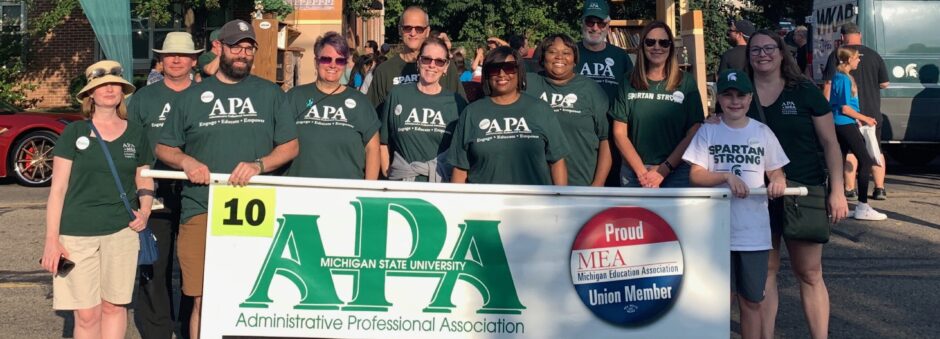New regulations for for-profit colleges and new protections for their students might be moving closer to reality this week, after a federally appointed panel spent several days in Washington, D.C., considering the U.S. Department of Education’s proposed rules.
The rule, which is strongly supported by the APA’s national affiliate, the National Education Association (“NEAâ€), would require for-profit colleges to demonstrate that their vocational students are learning what they need to get jobs (or “gainful employment.â€) These schools commonly rely on millions of dollars in taxpayer money to operate, and federal officials have said that they want to make sure that the public investment pays off for students.
President Obama addressed the issue this summer, saying, “There have been some schools that are notorious.  Students aren’t getting what they need to be prepared for a particular field.  They get out of these for-profit schools loaded down with enormous debt.  They can’t find a job.  They default.  The taxpayer ends up holding the bag…and the for-profit institution is making out like a bandit.â€
Ninety-six percent of students at for-profit colleges borrow money from the federal government to attend, compared to 13 percent of public community college students, according to government reports. Those students, on average, also pay four times as much in tuition as community college students, but they’re also much less likely to graduate and get a job.
Students attending for-profit colleges accounted for 47 percent of all federal loan defaults in 2008 and 2009. Even worse, according to government investigators, some schools have purposefully deceived students and federal authorities about the value of their academic programs and the true costs of enrollment. Frequently, their victims are low-income students, women, students of color, and military veterans.
One of them, Iowa’s Eric Schmitt, told the U.S. Senate in 2011 that he owed about $50,000 for a two-year paralegal degree, which employers scoffed at. Since earning the degree, he had worked as a flagman on road construction sites, an assembly-line worker in a pesticide plant, and a warehouse custodian on the 6pm to 4am shift. “If it weren’t for my wife,†he told the NEA Advocate, “I’d be destitute on the streets.â€
Protective rules have been a long time in the making. In 2011, at the urging of NEA and other student advocates, the Department of Education (“DOEâ€) published a rule that required for-profits to meet specific standards around loan defaults and debt-to-income ratios among their graduates—or lose their Title IV funding. But a judge set it aside in 2012. Now, the DOE has drafted new regulations, but submitted the proposal to a rulemaking committee to attempt to create a policy consensus among all the stakeholders. Whether that panel will achieve consensus remains to be seen. For its part, NEA has submitted written comments to federal authorities calling for appropriate and vigorous protections for students.
“We certainly hope the process results in a strong and enforceable rule that protects students and taxpayers,†said Mark F. Smith, NEA’s senior policy analyst for higher education. “If the negotiators cannot reach consensus on such a rule, we support the Department proceeding on its own.â€
